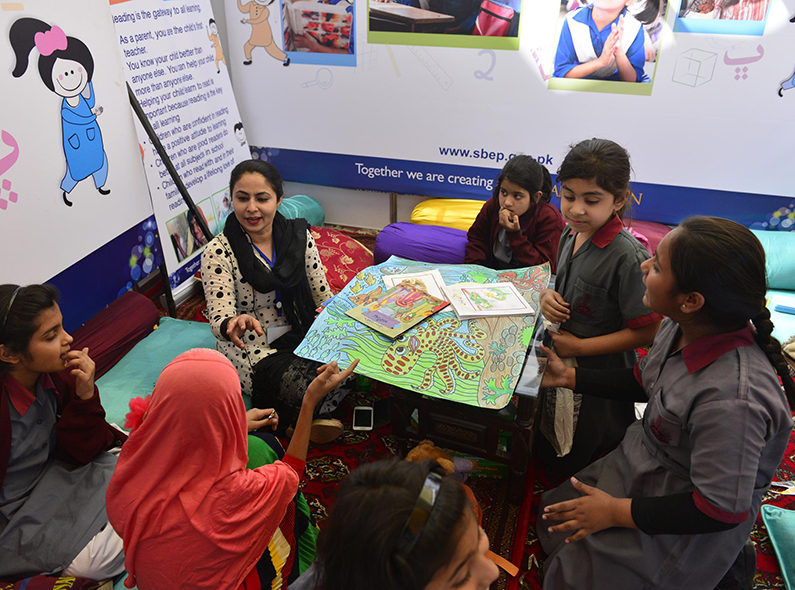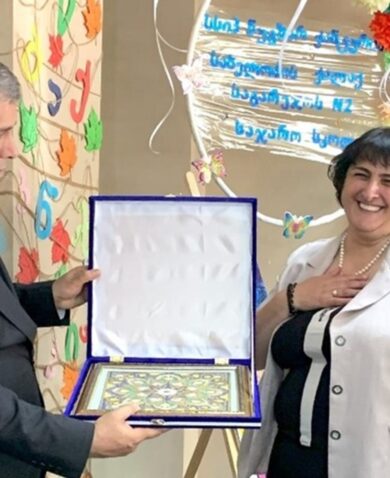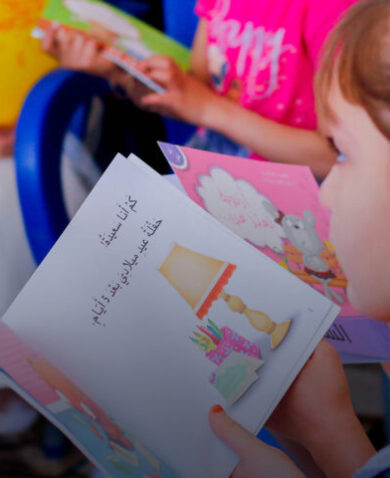
Reading Is Thinking: Using Read-Alouds for Comprehensive Literacy Instruction
March 3, 2016 | 3 Minute ReadEducation specialists Kathryn Camp and Laura Conrad explore the many benefits of a deceptively simple classroom activity: group read-alouds.
Phonics teaches kids the most basic building blocks of literacy: how to read and pronounce the letters, letter groups, and syllables that come together to create meaning. But phonics-based education for children can and should be more than learning to recognize words. When coupled with interactive exercises, learning to read can unlock children’s imaginations and intellects, and spur critical thinking skills that bring lifelong benefits.
Read-alouds can be effective, low-cost ways of fostering discussion, critical thinking, and learning through reading. Listening to fluent and expressive reading allows children to absorb more complex vocabulary than they can read, introducing them to new words, more intricate language patterns, and challenging ideas than they would encounter on their own. In addition, during read-alouds, teachers can ask students questions (before, during, and after reading) that help them engage with the story and text and can stimulate lively class discussions to support critical thinking and comprehension. In short, when children watch and listen to teachers read texts out loud, they are learning foundational skills related to concepts of print, the nuances of language, and the value of reading.

An interesting ethnographic study of an urban kindergarten classroom by Angela Wiseman shows how interactive read-alouds can create unique opportunities for teachers to highlight new ideas and scaffold opportunities for learning. This study found that interactive read alouds, when incorporated regularly into the classroom schedule, provided students with opportunities to learn “how books work.” The children learned to make connections between the texts and their own experiences, and they were able to demonstrate a higher level of understanding around the key concepts introduced in the lessons. The study also highlighted the importance of text selection and identifying books that build on localized, cultural, and personal understandings. By selecting texts that resonated with children’s experiences, teachers can stimulate higher-level discussions about more challenging topics.
In Sindh, Pakistan, where baseline data shows that students struggle with phonemic awareness, phonics, and fluency, Chemonics is using read-alouds under USAID’s Sindh Reading Program (SRP) to provide a comprehensive, contextual, and phonics-based approach to reading. In order to encourage a culture of both reading and critical thinking within classrooms, we are using the “Reading Is Thinking” approach. This approach incorporates teacher-facilitated group discussion into weekly read-alouds that focus on diverse genres, themes, and topics to stimulate critical thinking. We are also providing materials, such has scripted lesson plans and storybooks in Sindhi, to support interactive reading, which encourages students to play an active role in whole group read-alouds.

Through interactive discussions about word choice, illustrations, and characters, students learn to become active participants and drivers of the learning process. These lessons, while they do not explicitly focus on decoding and phonemic awareness, support the broader development of fluent and active readers by modeling for students the ways in which readers can learn from and enjoy texts.
We are still early in implementation but are confident that the “Reading Is Thinking” approach will have an impact on young learners. We will be carrying out regular formative assessments in schools across Sindh to gather up-to-date information related to students’ reading progress. Through these assessments, the SRP team will be able to share information with schools to inform instructional design and planning that meets the needs of students. Our goal is not only teaching children to read, but equipping them with broader literacy skills to become independent learners and critical thinkers, and we are excited to see and share the results.
The Sindh Reading Program addresses early grade reading and numeracy skills in Pakistan by improving assessment, training teachers, distributing supplementary materials, and encouraging family participation in education.



























